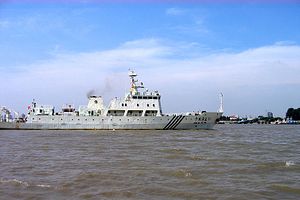As I noted in a recent piece, despite the narrative of a ‘cooling down period’ underway in the South China Sea of late, a deeper look at the dynamics at play shows that tensions continue to simmer beneath the surface (See: “Beware the Illusion of South China Sea Calm”).
One of the cases that had illustrated that was the unexpected cancellation of a China-Vietnam defense meeting in June, which had reportedly occurred due to private disagreements over the South China Sea. As I noted then, part of the disagreement was said to be due to Chinese pressure on Vietnam to stop energy exploration activities in the South China Sea, which Hanoi had looked to further over the past few months (See: “Nixed China-Vietnam Meeting Highlights Illusion of South China Sea Calm”).
On July 24, the BBC cited both a Southeast Asian oil industry source and a Vietnamese diplomatic source as confirming that Hanoi had terminated a gas-drilling expedition that had begun last month in a disputed area of the South China Sea following a threat from China that it would attack Vietnamese bases in the Spratly Islands. According to the industry source, the company behind the drilling, Repsol of Spain, was ordered to leave the area Vietnam called Block 136-03 (and China calls Wanan Bei-21) about 250 miles off of Hanoi’s southeast coast.
If true, this would be far from surprising. Over the past few years, China has developed a proven track record of coercing states when it comes to territorial and maritime disputes, whether it be Japan in the case of the Senkakus since it flared up in 2012, the Philippines with respect to Scarborough Shoal beginning in 2012 which was seized by China, or Vietnam as shown in the oil rig incident in the summer of 2014.
This behavior has shown few signs of changing, even as China continues to play up the idea of a ‘cooling down period’ in the South China Sea in 2017 by dangling what is at best a skeletal code of conduct. Indeed, the reality is that as Southeast Asian states – well aware of the clarity brought about by the arbitral tribunal ruling Philippines case against China, the softening of the Philippine South China Sea stance under President Rodrigo Duterte, and the uncertainty seen so far under the Donald Trump administration – have taken a series of unilateral steps to safeguard and advance their own claims, Beijing has been stepping up its rhetoric and taking its own actions to counter these moves.
It is true that some of these steps – which range from Indonesia’s renaming of part of its portion of the South China Sea (Jakarta, though not a claimant, is an interested party to the disputes) to the announcement by a Philippine energy official that drilling for oil and gas on Reed Bank could resume before the end of the year – are not nearly as bold as that of Vietnam, which for now is the lone forward-leaning Southeast Asian claimant. And it is also true that, in return, China’s reaction to these moves by Southeast Asian states other than Vietnam has not been as dramatic as yet.
But the broader point is that as we see Southeast Asian states take steps separately and perhaps even together to safeguard or advance their claims and perhaps even exploit some of the resources that lie beneath them, Beijing is likely to push back if it determines that this is a contested area, even if international law may not be on its side.
In that sense, beyond the specifics of the reports we have seen so far regarding the China-Vietnam spat, the episode itself holds broader significance because it may well be a harbinger of things to come in the South China Sea. As I have noted before, the pattern of Chinese behavior over the past few years in the South China Sea suggests that its assertiveness tends to be calibrated, with a series of ebbs and flows (See: “Beware the Illusion of China-ASEAN South China Sea Breakthroughs”). If this is sort of coercion towards Vietnam is happening in what Beijing has termed a ‘cooling down period,’ what happens when things heat up again?

































